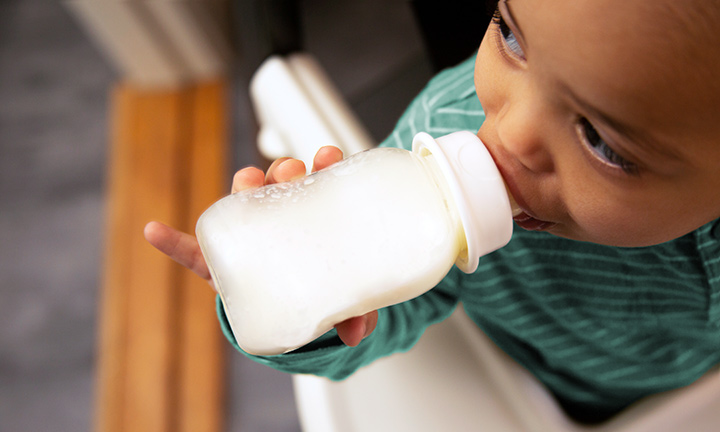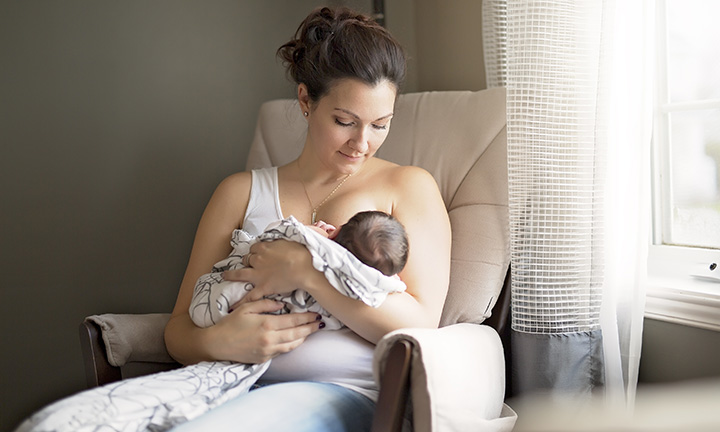
Breastfeeding Positions: Best Holds for Comfort, Latch, & Bonding
3 min readUpdated September 04, 2025
3 min readUpdated September 04, 2025
Learning to breastfeed takes time, and that’s perfectly normal. Finding the right position for you and your baby is crucial for comfortable and effective feeding. Our guide provides clear, evidence-based advice on common breastfeeding positions to boost your confidence. The right position can enhance milk flow, reduce discomfort, and strengthen your bond with your baby.
Here’s what you’ll learn:
Whether you’re new to breastfeeding or simply looking for more comfort and ease, this guide will walk you through the different breastfeeding positions and how to make them work for you.
Why Are Breastfeeding Positions Important?
Choosing the right breastfeeding positions for you and your baby can support both comfort and effectiveness during nursing. A good breastfeeding position helps your baby latch deeply, which reduces nipple pain and allows your baby to get more milk. It also promotes bonding and relaxation. For babies with reflux, prematurity, or difficulty latching, adjusting your breastfeeding position can be especially helpful.
Different breastfeeding positions also offer flexibility, allowing you to breastfeed while sitting, reclining, or lying down, depending on the situation. Switching infant breastfeeding positions throughout the day may also help empty the breasts more fully and reduce the risk of clogged ducts or mastitis.
Football Hold Breastfeeding Position
The football hold nursing position, also known as the “clutch hold” or “underarm hold,” is great for newborns, especially those who are small or premature, or if you’re recovering from a C-section.
This position offers excellent visibility of your baby’s latch and keeps pressure off the abdomen—ideal post-surgery.
Side Lying Breastfeeding Position
Breastfeeding in the side-lying position is perfect for nighttime feeds or recovery periods, allowing you to rest while feeding.
This infant breastfeeding position promotes relaxation and is especially helpful after a cesarean birth or during night feeds.
Laid-Back Breastfeeding Position
Also known as the biological nurturing position, the laid-back breastfeeding approach works with your baby’s natural instincts.
This position can be calming for both of you, is great for skin-to-skin contact, and helps newborns latch using natural reflexes. This position is particularly helpful if you have an overactive let-down reflex or excessive milk supply.
Cradle Hold Breastfeeding Position
The cradle hold is a classic position that many parents gravitate toward once breastfeeding is established.
This breastfeeding position is simple, familiar, and great for older babies with a strong latch.
Cross-Cradle Hold Breastfeeding Position
The cross-cradle hold offers more control and support, especially when you're helping your baby learn to latch correctly.
This position is excellent for early breastfeeding days and babies who need extra help positioning at the breast.
Breastfeeding Positions for Twins
Feeding twins simultaneously can take some practice, but using the right breastfeeding position makes it more manageable and efficient. Many of these positions are adaptations of single-baby holds, allowing both babies to latch comfortably at the same time.
Here are some commonly used breastfeeding positions for twins:
These infant breastfeeding positions can be rotated throughout the day to reduce fatigue and help with milk drainage. A twin-specific nursing pillow and extra support from a partner or helper can also make these positions more comfortable in the early weeks.
Tips for All Breastfeeding Positions
No matter which breastfeeding position you choose, a few simple tips can make the experience more comfortable for both you and your baby:
Need more guidance? Check out this helpful breastfeeding FAQ or speak with a lactation consultant for hands-on support.
Breastfeeding Challenges
Even with the best breastfeeding positions, challenges can arise. Common issues include:
Support from a lactation consultant or healthcare provider can be invaluable in resolving these issues early.
When to Contact Your Healthcare Provider
Reach out for support if:
FAQS AT A GLANCE
The “rule of 4s” is a handy guideline for storing freshly expressed breast milk at room temperature:
- 4 hours at room temperature (up to 77°F/25°C),
- 4 days in the refrigerator, and
- 4 months in the freezer (though up to 6–12 months is acceptable for deep freezing).
This rule is meant for healthy, full-term babies and applies to milk that hasn’t been previously frozen. However, storage times can vary depending on the source, so it’s always best to follow your healthcare provider’s recommendations.
The Bottom Line
Understanding the different breastfeeding positions can help you feel more confident and comfortable during your feeding journey. Try out the various positions and discover what works best for you and your baby.
For more helpful breastfeeding tips, and to earn rewards every time you buy diapers or wipes, download the Pampers Rewards app today!
- American College of Obstetricians and Gynecologists. Your Pregnancy and Childbirth: Month to Month, 7th ed. (Washington, DC: American College of Obstetricians and Gynecologists, 2021).
- Healthy Children. Positions for Breastfeeding
- Healthy Children. Tips for Freezing & Refrigerating Breast Milk
- La Leche League International. Positioning
- Mayo Clinic. Breastfeeding Positions
Read more about Baby
Related Articles
Join a World of Support
through Pregnancy and Parenthood.
TRACK WITH TOOLS
LEARN WITH EXPERTS
GET REWARDED















